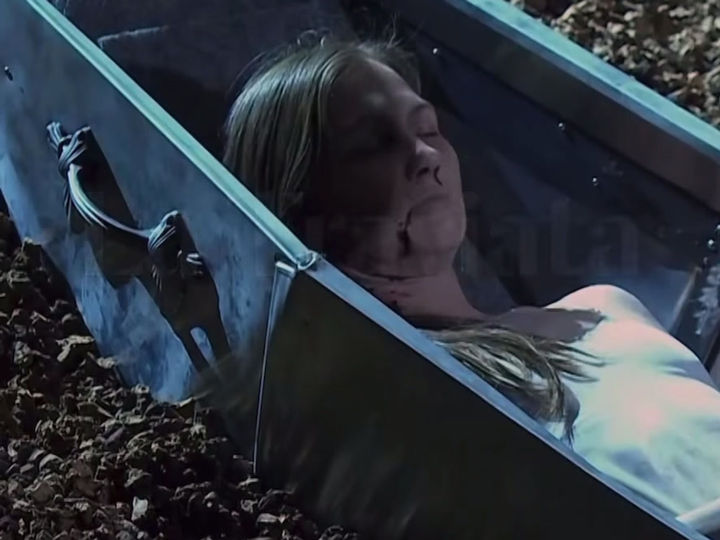
LA TRAVIATA
VERDI
// GRAND THÉÂTRE DE GENÈVE
Premiere: 14/06/2025 //
// DIRECTION & FASSUNG : KARIN HENKEL // CO-DIRECTION & FASSUNG : VICTORIA STEVENS // MUSICAL DIRECTION : PAOLO CARIGNANI // SET : ALEKSANDAR DENIĆ // COSTUMES : TERESA VERGHO // LIGHT : STEFAN BOLLIGER // DRAMATURGIE : MALTE UBENAUF //
Relying strongly on Alexander Dumas fils’ account of the real figure, Alphonsine ‘Marie’ du Plessis, we aimed through this production to show that death is not beautiful or noble or dignified. At the end of Verdi’s opera, Violetta dies, while the male protagonists look over her body and agree: she has made a noble sacrifice and will die as a martyr. This poeticising reflects little responsibility or acknowledgement of the violent societal constructs, of which these men are cornerstones, necessitating that women perform femininity to survive. Set within a clinical, exposed space that could be a morgue, an old ballroom or a bunker, we wanted to strip away traditional romanticism to reveal the commodification, voyeurism and fetishising of the ‘beautiful suffering’ of women at the core of this - and many other - operatic settings. Violetta exists in multiple iterations— a series of societal projections, shaped by male desire and cultural mythology- temporary, interchangeable, disposable, and she herself intrinsically understands this. A pattern is traced through the performative nature of her life: from the outset, she is placed on a stage, a permanent display item with no solid identity concept. As the Groundskeeper of the cemetery in Dumas’s book confirms, while tending Violetta’s grave, “She is my favourite dead body…”. We begin the opera with Act 3. A dying Violetta is alone and watches a performance: a child is placed on a stage by her father and sold to a male customer, while Violetta’s belongings are sold in a far corner. The performance becomes Violetta’s own funeral: another Violetta (representing the object, the body, her death) lies in her coffin and is carried away, as Violetta looks on. She sings the aria Addio del passato, and shortly before she dies, a new and desirable Violetta, free of illness and decay, is ushered in. The retrospective narrative that follows happens within a suspended breath at the end of Violetta’s life. Her fantasies and memories, both real and self-directed, converge and collide in the space as she confronts herself and impending death.


















